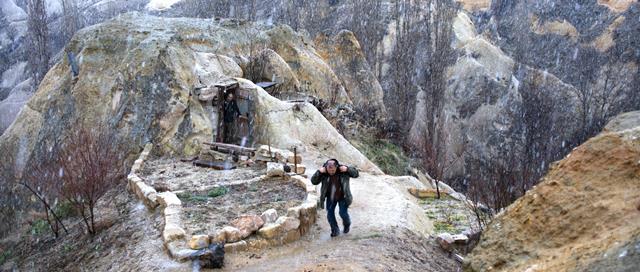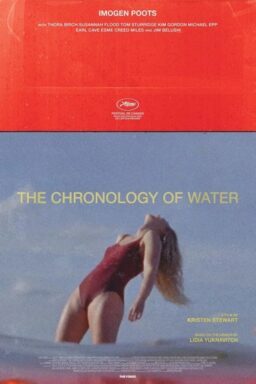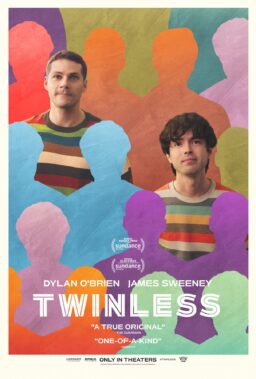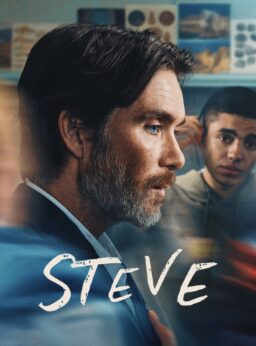Despite all the pushing and shoving one has to endure (or apply) en route to press screenings here at Cannes—as well as the hierarchical system of badges I lamented in last year’s post—a critic’s life at the festival is a relatively sheltered one. I can’t begin to imagine what it must feel like for aspiring producers and sales agents, who come to the Riviera not in pursuit of artistic excellence, but rather in hope of a good sell or lucrative acquisition. For Cannes, among so many other things, is also a huge film market.
All it takes is a short stroll to the lowest level of the massive Palais des Festivals to check out dozens of stands by various national film institutes, distributors and production companies. Daily editions of insider industry magazines—”Variety”, “Screen”, “The Hollywood Reporter”—keep piling up on the stands, each one bursting with paid ads for films ranging from highly anticipated blockbusters to the most obscure fare imaginable. Just take your pick: Russian Cinema Fund boasts such titles as “The Iron Ivan” and the cozy-sounding “Yolki 1914: Tsar Christmas”, while Raven Banner Entertainment entices you to see “Wolf Cop” (“Dirty Harry…Only Hairier!”) and the family-oriented crowd is being made aware of the upcoming joys of “Frog Kingdom 3D” and “Ratchet & Clank”.
As you walk down La Croisette, habitually removing people’s elbows from between your ribs and trying hard not to run into the hairy chest of yet another Chewbacca, you are surrounded by advertising. Huge lit signs celebrate the upcoming “The Hunger Games” installment, while big banners attached to every other lush balcony announce names of various distributors and movies you can expect to premiere as late as 2016 (one such ad made me aware of the upcoming adaptation of Antoine Saint-Exupery’s “The Little Prince”, which had already inspired the atrocious 1974 Stanley Donen movie and should really be put to rest).
It’s all art and commerce crashing against one another, making both love and war with daring, imaginative, shrewd producers who navigate the sea of opportunities, deals and accents. Every possible country is represented by a hungry throng of dreamers, united by a fantasy of striking movie and/or box office gold. In other words, it’s a perfect place for a double bill like the one I did today: “How to Train Your Dragon 2”, followed by Nuri Bilge Ceylan’s 196-minute Turkish slow-burner, “Winter Sleep”.

It was deeply satisfying to see those two films in the same venue back-to-back, with the Grand Theatre Lumiére providing a shrine for extreme examples of what cinema is capable of. The latest DreamWorks adventure, shown in 3D and packed with action, thrills and flaps of giant dragon wings, is a quintessential popcorn movie, in which scale, emotion and adventure are all never less then epic. “Winter Sleep”, on the other hand, moves at a glacial pace and resembles a newly-discovered play by Chekhov, albeit one set in the stunning vistas of Turkish plains of Anatolia.
Both films boast incredible, vast landscapes and at least one scene in “Winter Sleep”—that of chasing down a wild stallion—looked just like it could use the 3D that enhanced the new “Dragon” adventure so beautifully. What’s even more uncanny, both films were about male stubbornness and inability to compromise, with the seemingly weaker female characters as the carriers of compassion and grace. Combined, these two movies took up five hours of near-constant watching (thank God, or Gilles Jacob, for the comfortable seats at the Palais!), but they made me think of why is it that we go to see movies in the first place, and why are we so adamant about the division between “arthouse” and “mainstream” cinema.

It’s unfortunate that the way films are being sold and marketed reinforces divisions based not so much on taste, class and culture, as on whatever notions of taste, class and culture the big studios happen to have. “Winter Sleep” is the movie I liked less of the two, since there’s something stale in its approach and it seemed too much like a film made by its main character: it’s just as self-satisfied, superficially well-meaning and overbearing. Still, it offers an interesting, often engrossing experience—one that is not galaxies away from the emotions stirred by the latest DreamWorks franchise. For a hot minute, as I stumbled out of the Palais and went (yes) to the newly-opened Cannes branch Steak ‘n Shake to honor Roger’s favorite burger, I imagined an alternative movie universe: one in which Nuri Bilge Ceylan directs the new Spider-Man flick, and where Sam Raimi is given all the money he wants to make a chamber drama set in rural Poland. The possibilities of creative cross-fertilization are boundless; let’s hope that all those movie business folks running into each other on La Croisette will have sense and imagination enough to make them into brave new reality.
Don’t miss the following special events at the festival:
Screening of “LIFE ITSELF,” in Cannes Classics: Monday, May 19, at 5 pm in Bunuel.
IN CONVERSATION with Steve James and Chaz Ebert about “Life Itself,” at the American Pavilion, Wednesday, May 21 at 11 am.
THE ROGER EBERT FILM CRITICS PANEL: at the American Pavilion, Thursday, May 22 at 3 pm. Moderated by Michael Phillips (Chicago Tribune), including Eric Kohn (Indiewire), AA Dowd (The Onion AV Club), Wesley Morris (Grantland), Keith Simanton (IMDB), and Allison Willmore (Buzzfeed).












